So much has been written about the temples of Angkor Wat that I’m not going to go into too much detail about everything we did. Instead, I’ll focus on some of our highlights and favorites.
To start, a summary: the temples around Siem Riap in Cambodia were constructed during the reigns of several kings approximately 800-1200 years ago. They are remarkably well-preserved, for the most part, and attract hundreds of thousands of tourists from all over the world every year. We spent two full days plus an extra evening visiting the temples, which is certainly not enough time to see them all, but plenty of time for a heat-sensitive person like me to spend wandering around in 100-degree-plus temperatures!
Our first evening, we headed out to the main temple, Angkor Wat, to see the sunset. [Three-day passes are available for $40, but if you purchase your pass after 5pm, you can add an extra evening. Having your own passport photo will speed the process.] We spent a couple of hours roaming the walkways and climbing the steep stairs, admiring carvings and bas-relief. Here are some of our favorite photos:
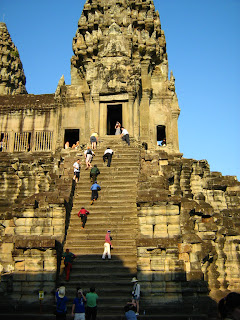 We did this steep climb, too! It’s pretty scary, but worth it to see what’s up there.
We did this steep climb, too! It’s pretty scary, but worth it to see what’s up there.
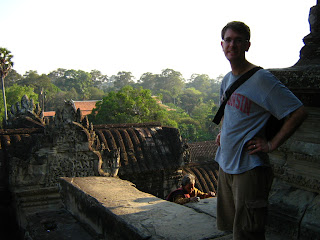 We made it. Great views of the treetops! That is definitely southeast Asia.
We made it. Great views of the treetops! That is definitely southeast Asia.
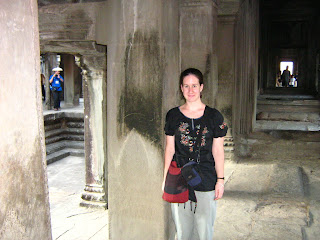 I love stone pillars.
I love stone pillars.
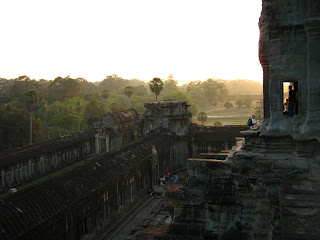 Sunset is a great time to see the temples. Some people don’t like the crowds, but I enjoy hearing the different languages and watching people have their temple-viewing experiences.
Sunset is a great time to see the temples. Some people don’t like the crowds, but I enjoy hearing the different languages and watching people have their temple-viewing experiences.
 These bas relief went on for what felt like miles...
These bas relief went on for what felt like miles...
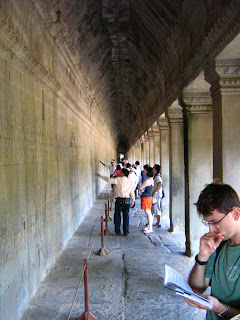 Robert enjoyed studying them and using the guidebook to understand the stories.
Robert enjoyed studying them and using the guidebook to understand the stories.
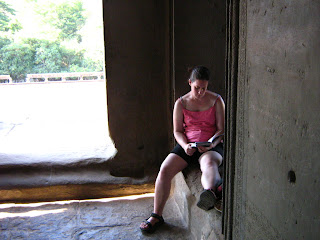 I preferred sitting in shady windows to read about Cambodian history when it got too hot to walk around!
I preferred sitting in shady windows to read about Cambodian history when it got too hot to walk around!
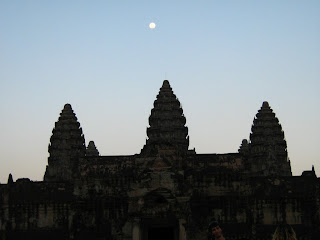 The moon was bigger in real life than it is in the photo, but I still like the photo.
The moon was bigger in real life than it is in the photo, but I still like the photo.
To start, a summary: the temples around Siem Riap in Cambodia were constructed during the reigns of several kings approximately 800-1200 years ago. They are remarkably well-preserved, for the most part, and attract hundreds of thousands of tourists from all over the world every year. We spent two full days plus an extra evening visiting the temples, which is certainly not enough time to see them all, but plenty of time for a heat-sensitive person like me to spend wandering around in 100-degree-plus temperatures!
Our first evening, we headed out to the main temple, Angkor Wat, to see the sunset. [Three-day passes are available for $40, but if you purchase your pass after 5pm, you can add an extra evening. Having your own passport photo will speed the process.] We spent a couple of hours roaming the walkways and climbing the steep stairs, admiring carvings and bas-relief. Here are some of our favorite photos: